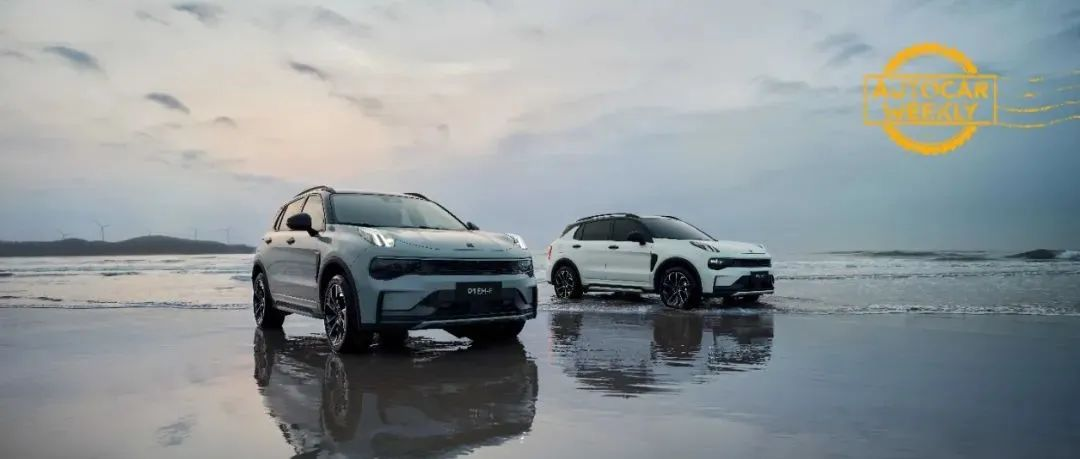文 | Jiang Xiaohua
DHT has recently been frequently searched, even more so than when foreign brands heavily advertised DHA to defeat cod liver oil. This is due to the battle between DHT and range extender technology. Many people choose to support based on feeling, without understanding what DHT really is.
DHT is a relatively new type of hybrid technology that can create HEVs and PHEVs, with a complexity greater than both pure electric and range extender technology. Most Chinese automakers that are heading towards electrification are taking the DHT route. From the technical principles to the data from various companies, DHT hybrid technology not only has better energy efficiency than current hybrid vehicles on the market, but also has excellent power performance, making hybrid vehicles no longer “snails that only save fuel.”
For a long time in the past, whenever the word “hybrid” was mentioned, people instinctively thought of Japanese cars. “There are only two types of hybrid, Toyota and others” was a maxim that was passed down from person to person based on the most straightforward empirical evidence. However, this has also been a story that has lasted for more than a decade, and during this time, the world has been progressing and researchers in hybrid technology have not been idle.
The reason why we no longer see new developments in hybrid technology from German, Japanese, and American car companies might be precisely because the forefront of hybrid technology has emerged in China. DHT hybrids are flourishing throughout China, especially with the top domestic brands using their deeper technical expertise to present creative hybrid solutions.
It is not difficult to understand the emotional state of the DHT camp, but emotions are naturally useless in the market. In my opinion, both hybrid and range-extender technologies are new energy technologies that are trending upwards in the market for a period of time, especially since hybrid technology is an important part of vehicle electrification and it is unlikely that we can skip it. This is not to say that the development of pure electric vehicles by itself cannot support rapid penetration, but comprehensive evaluation of the current state and environment of new energy development proves that policies are unlikely to fully support pure electric vehicles.
In last week’s annual auto industry conference in Yabuli, didn’t the chairman of a well-known car company and the head of a universal battery supplier argue with each other? After an argument that was not completely debated, the conclusion the public arrived at was that pure electric vehicle companies are losing money while battery industry leaders barely make profit.
Setting aside many surface-level reasons, the fundamental reason is the energy structure of the main automotive market and the market supply capacity of core raw materials, as well as the efficient energy storage systems that are necessary for the electric vehicle market and society, which still has a large gap to fill. In such a resource-scarce environment, the new cooperative state between the supply chain and the auto industry, brought about by market competition, currently seems unsustainable. Both parties are enduring immense pain in their ambitions for the capital market. Reflection can arrive at any time, so it’s just about when capital has earned enough profit and wants to exit the market.
Therefore, hybrid power is a crucial link in a reasonable path to new energy in the automotive industry. After establishing China’s position as the global center of the electric vehicle market, the return to rational conversion schedule in electrification is inevitable. In fact, we can see that the contribution rate of hybrid power and range extension is significant in the high penetration rate growth of new energy in 2022. This is probably why the dispute between DHT and range extension will become a hot topic on Weibo this year.
However, the hybrid power style represented by Japanese and European models before really doesn’t match the market demand for hybrid power in the process of electrification. For example, Japanese hybrid power pursues extreme energy efficiency, while performance is not in its consideration range.
In recent years, I have mainly driven a Lexus hybrid power vehicle with a basic fuel consumption of around 7L. This car is not incapable of performance. Under the sport mode, as long as you know how to drive, you can still feel its surging power. Compared with vehicles of the same body type and displacement, it won’t be slower. However, under the sport mode, the fuel consumption is basically above 15, and it has nothing to do with hybrid power.
The European hybrid power reflects European dilemma. Performance certainly cannot be sacrificed, but energy consumption has not decreased much. Therefore, the European hybrid power is basically just a design concept that has not really blossomed before withering away.
Another common feature of the two routes is that they have not attached much importance to intelligence. This is a bit far from the times. The traditional craft spirit and language will not be effective at the peak of intelligent electrification.
The era needs hybrid power, but what it needs is hybrid power that fits the times.
Taking the recently released Lynk E-Motive intelligent hybrid technology route and the Lynk 01 EM-F, the first model of the technology landing on the oil-hybrid vehicle, as an example of the Lynk brand, let’s talk about a few necessary dimensions for the trendy electric-hybrid route that can develop steadily even without making it to the hot searches.
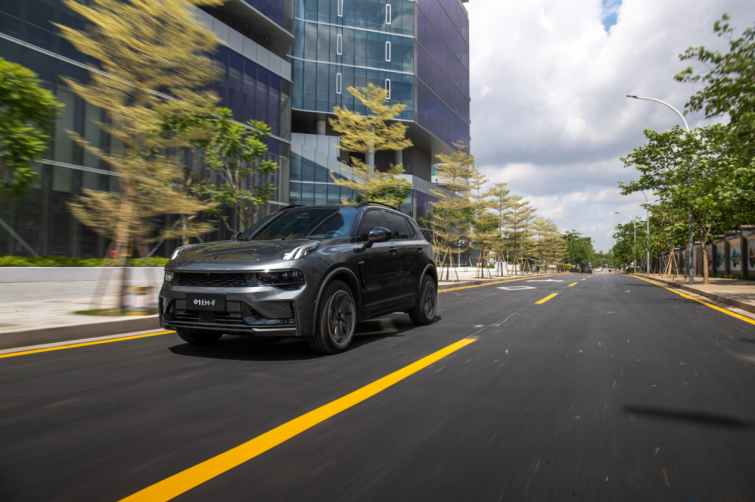
First, energy efficiency and efficiency improvement must be clearly improved.
In short, it saves. Since the high oil prices this year and the expected trend towards higher oil prices in the future perfectly match the process of new energy in the automotive industry, even the most conservative automakers have revised their expectations for the penetration rate of new energy vehicles this year. No matter how flashy the marketing language is, the economic account is still the biggest reason for rational consumption. Therefore, even the most conservative automakers have revised their expectations for the penetration rate of new energy vehicles this year.For the forward-looking new generation of hybrid electric vehicle (HEV) technology, extreme efficiency is the eternal pursuit. As the first hybrid model with Lynk E-Motive smart hybrid electric technology, the Lynk 01 EM-F is powered by the currently most efficient DHE15 hybrid special engine with a thermal efficiency of up to 43.32%, while balancing power output. The hybrid core uses a DHT Pro electric drive transmission with two sets of planetary gearsets, which achieves full-speed parallel connection and allows internal combustion engine power to be utilized even at low speeds, without excessive reliance on electric drive and battery power.
As an HEV, the comprehensive fuel consumption of the Lynk 01 EM-F with this smart hybrid electric technology is lowered to 4.88L/100km, reaching a range of 1031 kilometers, which directly crosses the threshold of a 1000-kilometer driving range. Moreover, this power system is not picky and is compatible with regular gasoline with an octane rating of 92.
Simply put, the numbers 5L, 1000 kilometers, and 92-octane gasoline constitute the energy efficiency threshold for hybrid power technology in the era of new energy. At this level of energy efficiency, the overall operating cost of HEVs and pure electric vehicles (EVs) is comparable. This is where the concept of “one tank of gas per month” proposed by the Lynk 01 EM-F comes into play.
For brands that adopt hybrid technology, it is not a guaranteed transition route. Just because I have a hybrid does not mean I can naturally take a share of the market. Like EVs, HEVs that can benefit from the new energy market must show users that, at least for now, choosing my hybrid is the most appropriate, or at least one of the most appropriate, options.
Starting from the foundation of the Lynk 01, Lynk’s smart hybrid electric technology has demonstrated that all of Lynk’s future new energy products will reach this level of energy efficiency. For Lynk, high efficiency is a standard feature.
Secondly, intelligence must never lag behind and must actively lead.
Although many of us still refer to automotive technological innovation as new energy-dominated, the capital market’s response in the first few years was quite clear. However, anyone who is relatively clear-minded in the industry understands the final outcome of this innovation: market recognition will ultimately favor automotive intelligence.
Lynk, and the Geely Automobile Group behind it, have the deepest understanding of the ultimate goal of intelligence among all automotive brands, and have also moved the fastest in this area. Geely was one of the first companies in the world to push its entire product lineup toward intelligence, has the most complete and advanced vehicle intelligence architecture, and has consistently promoted full-stack self-research in the field of automotive intelligence.# The Smart Attitude of LYNK & CO 01 EM-F
LYNK & CO 01 EM-F has a very distinct intelligence attitude. The vehicle is equipped with 12 ultrasonic radars, 5 millimeter-wave radars, 4 high-definition surround view cameras, and 1 high-precision front-view camera. Its driver assistance features are at the forefront of cross-energy and comparative levels.
In terms of its intelligent cockpit, LYNK & CO 01 EM-F uses the 8155 Qualcomm Snapdragon, the No.1 Internet celebrity in the automotive chip industry. This technology, including voice interaction, brings the cabin experience to a leading level. LYNK & CO 01 EM-F has also created an entry-level 8155 intelligent car at its current price point.
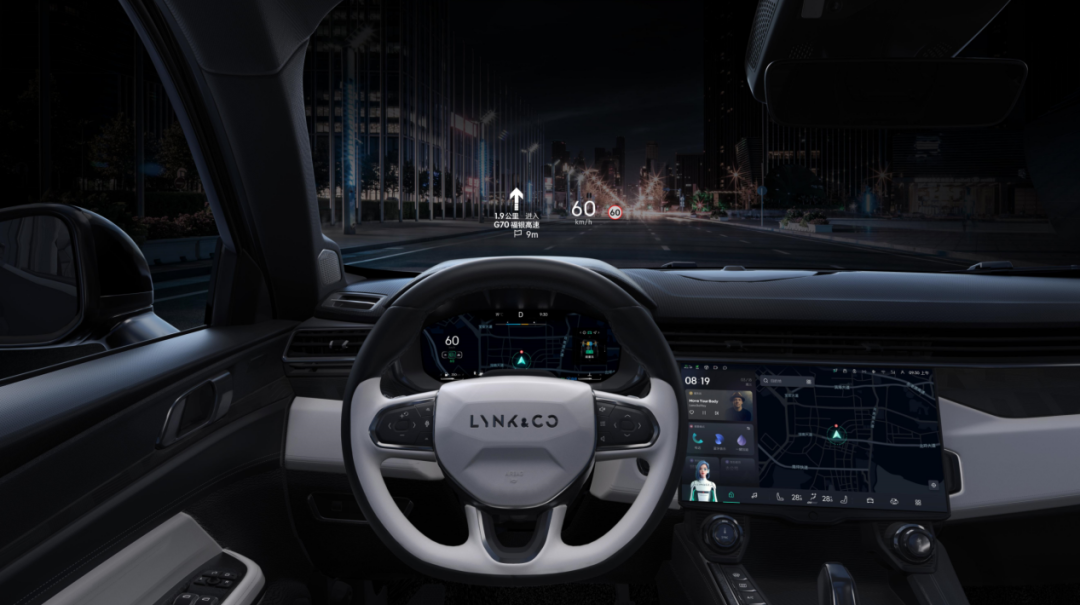
Of course, high potential OTA upgrades for the chassis, intelligent driving, cockpit, and body domains are a must-have feature. For cars undergoing rapid iterations, many users are concerned not only with whether their car is currently leading but also whether it will be able to keep up with tomorrow’s upgrades. The OTA level, time-consuming nature, and potential of hybrid models must be consistent with that of pure electric models.
Third, performance cannot be compromised.
The hybrid route sold tens of millions of cars worldwide for Japanese brands in the past, but it is not feasible in today’s era, especially for Chinese brands. For cars going toward a new era, the strategy of a muscle car seems to conflict with its character. If an electric car has no handling, the market can still accept it, but a hybrid without handling is particularly unacceptable.
LYNK & CO has its inherent advantages in driving fun and safety. This is evidenced by the total championship titles in the WTCR races over the past three years and consistently top-notch SUV collision test results.
LYNK & CO 01 EM-F never intended to make concessions toward energy conservation just because of its positioning in new energy products. Instead, the brand’s vision is to enhance driving fun. In LYNK & CO’s concept, energy conservation and driving performance are the two basic dimensions of E-Motive intelligent hybrid.

“Extremely low energy consumption with power consideration” is the advantage of this series of serial and parallel DHT today. Normally, serial connection is used to reduce energy consumption, but it can switch to parallel connection to form a combined force when greater power is required. LYNK & CO 01 EM-F even features a launch control function, which reminds drivers that the era of “fuel-efficient car = muscle car” has passed with its 7.8 seconds of 0-100km/h acceleration score.The intelligent hybrid technology offered by Lynk&Co, implemented through the unique DHT Pro system, expands the intervention speed range of the fuel powertrain by dividing it into three physical gears or modes, thus achieving what is called “parallel full-speed domain”. The driver can accelerate anytime, anywhere, from low to high speed, with confidence. During high-speed overtaking, the acceleration speed of Lynk&Co 01 EM-F from 80-120km/h is one second faster than other vehicles in the same class. Drivers understand that one second can make a big difference in driving confidence.
Uncompromising performance and safety are the proud hallmarks of hybrid technology, as well as the core demands of car users that cannot be seen.
Finally, the real needs of users cannot be compromised.
Let me talk about some “non-core” configurations that I remember. For example, the health cabin construction. Equipped with CN95 anti-virus filters and anti-bacterial and anti-allergic materials covering all seats and steering wheels.
I remember that this concept was developed by Geely Cars when the covid-19 broke out in 2020. At that time, many companies launched product-related measures to combat viruses and infections. However, now, most of these measures seem to be ineffective.
However, Lynk&Co and Geely Cars have been developing the health cabin concept since the beginning and have worked with some authoritative indoor environmental organizations at home and abroad to study and demonstrate the feasibility and relevant standards of the technology. Now, we can see the health cabin features have expanded on Lynk&Co 01 EM-F from touching, breathing, virus filtering to allergy prevention and relief, motion sickness prevention and more, which is still under research.
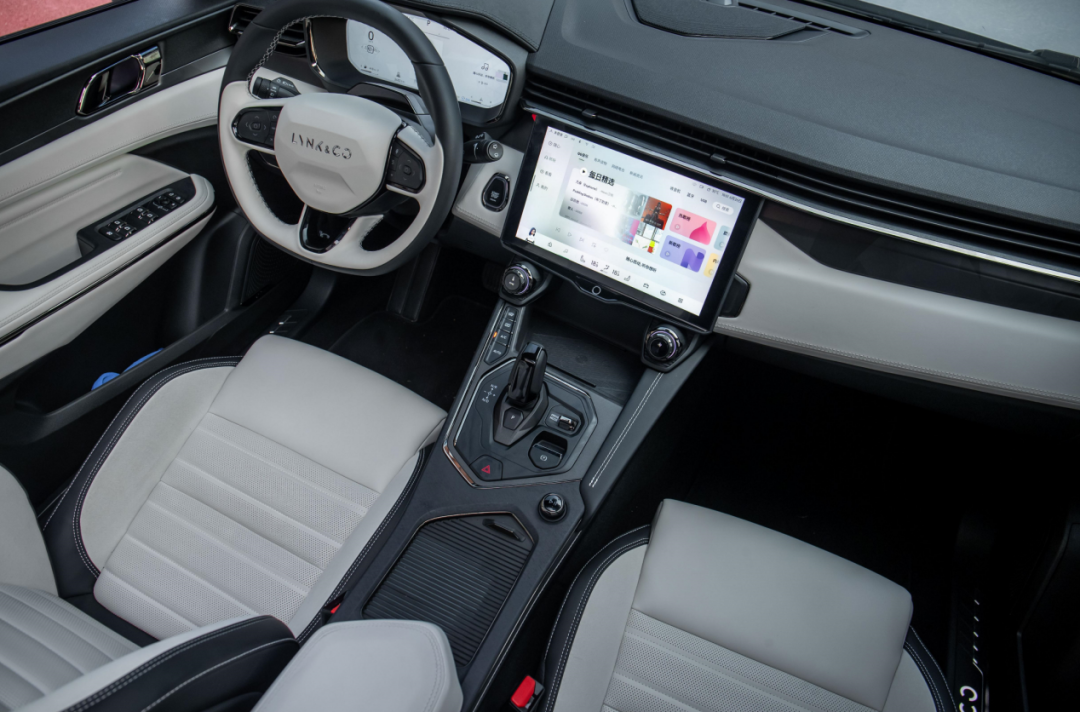
This is not a central selling point in car purchases, so most companies will treat it as just a buzzword. But as an environment where people and families spend a lot of time, the health cabin is the most basic customer demand.
Upon the launch of the new car, Lynk&Co 01 EM-F offers customers the “Four Major Worry-Free” vehicle-booking benefits.
Enjoy RMB 4,000 in “Lynk&Co Gold,” up to RMB 4,000 in trade-in subsidies, and a carefree car-booking experience. The first owners also have a 30% discount on their car’s value for three years, allowing them to maintain its value with ease. The first owner can enjoy lifetime free quality assurance, lifetime free roadside rescue, and lifetime free data traffic service, reassuring customers of the car’s quality. The package also includes five years or 80,000 km of free basic maintenance, with 15,000 km / 12-month maintenance intervals-making vehicle maintenance hassle-free.# Consumers’ Concerns about New Technology
Consumers have a few concerns when it comes to new technology: they worry about the hassle and cost of maintenance and repair, they worry about the quality and durability, and they worry about the potential depreciation. Geely’s four major worry-free benefits comprehensively cover these unknown risks for consumers, and they are not only genuine commitments but also a manifestation of confidence and persuasiveness.
The Geely 01 EM-F is priced at RMB 181,800-203,800, reflecting Geely’s commitment to new technologies. At present, customers can enjoy benefits such as priority booking rights and a 50% national purchase tax subsidy. As a HEV hybrid model, the Geely 01 EM-F can also enjoy the energy-saving car blue license plate lottery policy in cities such as Guangzhou and Tianjin, further lowering the purchase threshold.
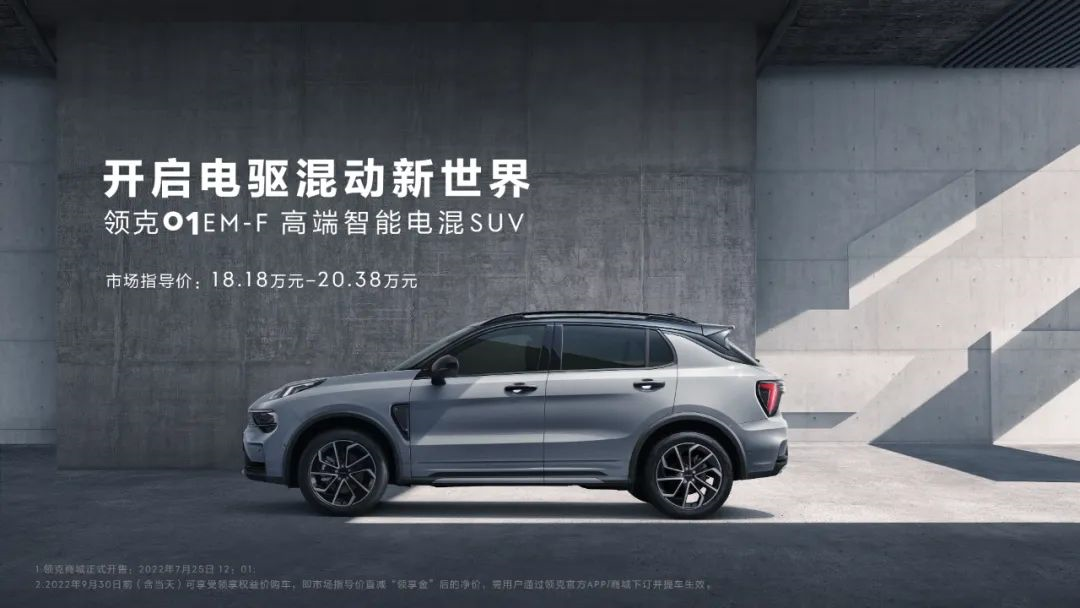
The Geely 01 EM-F embodies Geely’s view of the intelligent electrification era. Geely chose the most basic 01 in its product line to serve as the pioneer of the intelligent electrification era. At the same time, we can see that the Geely 01 EM-F has not retained its core in terms of energy-saving level, intelligent architecture, and handling safety.
In other words, these three dimensions are the basic standards for hybrid products to upgrade to the intelligent electrification era established by the Geely brand. All products should compete within the framework of these three basic standards. With the launch of the Geely 01 EM-F, Geely has defined new benchmarks for hybrid models in the intelligent electrification era.
This is Geely’s fundamental interpretation of the new and fashionable intelligent electrification era for this flagship new car. As Li Xiang, CEO of Geely Automotive Group, said at the Geely Spring-Summer launch event, Geely’s trend is not novelty, but rather guiding the mainstream aesthetic and core product values; Geely’s youth is not about age, but rather a young mindset, which challenges conventions and refuses compromise.
Li Xiang’s meaning is that while Geely and other brands are on the hybrid route, it is important to realize that the hybrid is an important part of the intelligent electrification revolution in automobiles. Whether it is a transitional technology or not, one must positively embrace and guide the trend towards intelligent electrification, solve its pain points, and turn its advantages into competitive edges. It cannot be a passive bystander waiting for opportunities to fall into one’s lap. One must choose excellence, even if it is just a flower, you absolutely cannot let it wither.
I agree with this and believe that this is how we should argue about whether intelligent electrification is superior or not.
This article is a translation by ChatGPT of a Chinese report from 42HOW. If you have any questions about it, please email bd@42how.com.
